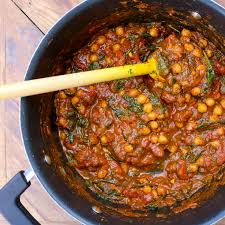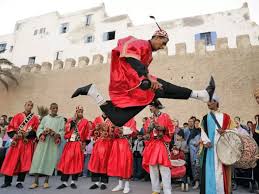Exploring the Flavours of Morocco: A Culinary Journey Through Moroccan Recipes
Embark on a gastronomic adventure through the vibrant and aromatic world of Moroccan cuisine. Renowned for its rich flavours, exotic spices, and diverse influences, Moroccan recipes offer a tantalising experience for the taste buds.
The Essence of Moroccan Cuisine
Moroccan cuisine is a reflection of the country’s history, geography, and cultural diversity. From the bustling markets of Marrakech to the coastal towns of Essaouira, each region contributes unique ingredients and cooking techniques to create a tapestry of flavours.
Key Ingredients
At the heart of Moroccan recipes are an array of spices such as cumin, cinnamon, turmeric, paprika, and saffron. These spices infuse dishes with depth and warmth, elevating simple ingredients to culinary masterpieces. Other essential components include olives, preserved lemons, couscous, and tender meats like lamb and chicken.
Signature Dishes
One cannot explore Moroccan cuisine without savouring iconic dishes such as:
- Tagine: A slow-cooked stew that combines meat (often lamb or chicken) with vegetables and dried fruits in a conical earthenware pot.
- Couscous: Tiny steamed balls of semolina served with a flavourful stew made from vegetables or meat.
- Pastilla: A sweet and savoury pastry filled with pigeon meat or chicken, almonds, eggs, and aromatic spices.
- Mint Tea: A refreshing blend of green tea infused with fresh mint leaves and sugar—a staple in Moroccan hospitality.
The Art of Cooking
Moroccan recipes are not just about ingredients; they embody a way of life centred around sharing meals with loved ones. Traditional cooking methods like slow simmering in tagines or grilling over charcoal impart a unique flavour profile that is both comforting and soul-nourishing.
Culinary Traditions
In Morocco, cooking is considered an art form passed down through generations. Families gather to prepare elaborate feasts for special occasions like weddings or religious festivals. The act of cooking is steeped in tradition and ritual—a celebration of community and heritage.
Bringing Morocco to Your Kitchen
You don’t need to travel to Morocco to experience its culinary delights. With authentic recipes readily available online and in cookbooks, you can recreate the magic of Moroccan cuisine in your own kitchen. Let the heady scents of cumin and coriander transport you to the bustling souks of Marrakech as you embark on your own culinary odyssey.
Embrace the Flavours
Whether you’re simmering a fragrant tagine or baking delicate pastries dusted with icing sugar, each bite brings you closer to understanding the soulful essence of Morocco. So gather your spices, sharpen your knives, and prepare to be swept away on a journey through the vibrant world of Moroccan recipes.
Exploring Moroccan Cuisine: Your Guide to Classic Dishes, Spices, and Cooking Techniques
- What are some popular Moroccan dishes?
- How can I make an authentic Moroccan tagine at home?
- What spices are commonly used in Moroccan cuisine?
- Are there any vegetarian or vegan Moroccan recipes?
- What is the traditional way to serve couscous in Morocco?
- Can you recommend a good recipe for mint tea?
- How do I cook a perfect Moroccan-style lamb dish?
- Where can I find reliable sources for traditional Moroccan recipes?
What are some popular Moroccan dishes?
Moroccan cuisine boasts a diverse array of tantalising dishes that reflect the country’s rich culinary heritage. Some popular Moroccan dishes include the iconic tagine, a slow-cooked stew featuring tender meats, vegetables, and aromatic spices simmered to perfection in a conical earthenware pot. Couscous, tiny steamed semolina balls served with a flavourful stew of meat or vegetables, is another staple in Moroccan households. Additionally, pastilla, a delectable sweet and savoury pastry filled with pigeon or chicken, almonds, eggs, and fragrant spices, showcases the intricate blend of flavours that define Moroccan cooking. These dishes, along with refreshing mint tea and other delights, capture the essence of Morocco’s vibrant gastronomic culture.
How can I make an authentic Moroccan tagine at home?
To recreate an authentic Moroccan tagine at home, start by selecting high-quality ingredients such as tender cuts of lamb or chicken, seasonal vegetables like carrots and potatoes, and a blend of aromatic spices including cumin, cinnamon, and paprika. Begin by marinating the meat in a mixture of olive oil, garlic, and the spice blend to infuse it with flavour. Layer the ingredients in a traditional tagine pot, ensuring that they are arranged evenly to allow for even cooking. Slowly simmer the tagine over low heat to allow the flavours to meld together and create a rich, fragrant stew. Serve the tagine piping hot with a side of fluffy couscous or crusty bread to soak up the delicious sauce. By following these steps and embracing the essence of Moroccan cooking techniques, you can savour an authentic taste of Morocco in your own kitchen.
What spices are commonly used in Moroccan cuisine?
Moroccan cuisine is renowned for its rich and aromatic flavours, which are largely attributed to the diverse array of spices used in traditional recipes. Commonly found in Moroccan kitchens are spices such as cumin, cinnamon, turmeric, paprika, and saffron. These spices not only add depth and complexity to dishes but also infuse them with a warm and exotic essence that is characteristic of Moroccan cooking. From hearty tagines to fragrant couscous dishes, these spices play a vital role in creating the distinct and irresistible taste of Moroccan cuisine.
Are there any vegetarian or vegan Moroccan recipes?
For those seeking vegetarian or vegan options in Moroccan cuisine, there is a delightful array of dishes that cater to these dietary preferences. From hearty vegetable tagines bursting with seasonal produce to fragrant couscous studded with chickpeas and dried fruits, Moroccan cooking offers a wealth of plant-based delights. Traditional recipes often showcase the vibrant flavours of vegetables, legumes, and aromatic spices, making it easy to enjoy the rich culinary heritage of Morocco while staying true to vegetarian or vegan principles. Whether you’re exploring the medinas of Marrakech or recreating these recipes in your own kitchen, the world of meat-free Moroccan cooking is as diverse and delicious as it is colourful and comforting.
What is the traditional way to serve couscous in Morocco?
In Morocco, couscous holds a revered place in the culinary tradition, and the traditional way of serving it is a cultural ritual in itself. Typically, couscous is steamed to fluffy perfection and then generously topped with a rich stew of vegetables, meat (often lamb or chicken), chickpeas, and aromatic spices. The dish is often presented in a large communal platter where family and friends gather around to share this hearty meal. The art of serving couscous in Morocco goes beyond mere sustenance; it symbolises hospitality, togetherness, and the cherished values of Moroccan culture.
Can you recommend a good recipe for mint tea?
For those seeking to recreate the authentic Moroccan tea experience at home, a classic recipe for mint tea is a must-have. Known as “Moroccan mint tea,” this refreshing beverage combines green tea leaves, fresh mint sprigs, and sugar in perfect harmony. To prepare this invigorating drink, simply steep green tea leaves in hot water, add a generous handful of fresh mint leaves, and sweeten to taste with sugar. The result is a fragrant and revitalising brew that captures the essence of Moroccan hospitality in every sip.
How do I cook a perfect Moroccan-style lamb dish?
To cook a perfect Moroccan-style lamb dish, start by marinating chunks of lamb in a blend of traditional Moroccan spices such as cumin, paprika, cinnamon, and ginger. Allow the meat to absorb the flavours for at least a few hours or preferably overnight to enhance the taste. In a large tagine or heavy-bottomed pot, sauté onions, garlic, and a mix of chopped vegetables like carrots and tomatoes until they are soft and fragrant. Add the marinated lamb to the pot along with some broth or water, cover it with a lid, and let it simmer gently until the meat is tender and succulent. Finish off by garnishing with fresh herbs like coriander or parsley and serve your aromatic Moroccan-style lamb dish with fluffy couscous or crusty bread for an authentic dining experience that will transport you to the heart of Morocco’s culinary traditions.
Where can I find reliable sources for traditional Moroccan recipes?
For those seeking authentic and reliable sources for traditional Moroccan recipes, a treasure trove of culinary delights awaits. From reputable cookbooks by renowned Moroccan chefs to online platforms dedicated to preserving the rich heritage of Moroccan cuisine, there are numerous avenues to explore. Delve into the pages of time-honoured recipe collections passed down through generations or immerse yourself in the digital realm where food enthusiasts and experts share their knowledge and passion for Moroccan cooking. Whether you prefer the tactile experience of a printed cookbook or the convenience of browsing online resources, rest assured that a world of fragrant spices, succulent tagines, and sweet pastries is just a click or page turn away.




